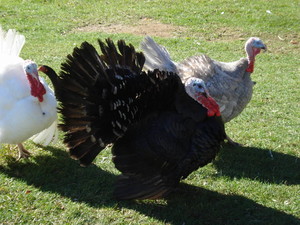13 Mar Fri 2009
Maple Sugarin' Update
It's time for an update on the maple sugarin' here in Connecticut. It's been a really busy week--with a brief trip to our favorite Phishing hole last weekend (more on this later)--but we're full scale on our maple syrup operation right now. We've got a great system to allow us to boil sap during the week as well as on the weekends. Erica fires up the evaporator during the day, and then it's my turn as the daylight slips away.
We will be running the evaporator almost non-stop Friday through Sunday this weekend. We have a few hundred gallons of raw sap to boil with more to collect as it continues to flow. Weather conditions are perfect!
So here is our set up in full operation. We've been cutting the slab-wood and splitting it into small, almost kindling-sized pieces in order to get the fire raging inside of the evaporator. While cutting and chopping, we take a break every 5-10 minutes to add more wood to the fire. It's a fluid process that needs constant attention. Leave the fire unattended for 5 minutes too long and it's almost out! The slab-wood (mostly spruce) burns quickly.

Here is a pile of split spruce and some pine. Imagine putting 2 x 4 scrap into a fire. That's quite close to the effect we get with the split spruce. At times it seems like a race as Erica feeds the fire and I split wood to replenish the pile. My brother is coming tomorrow for a visit, so perhaps I can get him on the splitting task for a while. This miight make for a good trade for a trunk load of firewood for his fireplace.
In addition to always adding wood to the fire and splitting some reserve wood, we must keep a constant eye on the level of sap inside of the evaporator. We need to refill the 5 gallon reservoir of the "SD 3000" every 15 minutes when we're really boiling. Here Erica is adding more sap.

It looks like I've momentarily caught up with the splitting! That pile, though it looks impressive in this shot, will only last a few hours while we're at peak boiling. Luckily, the softwoods split readily and I can use my axe instead of a maul. Aside from 5 gallon buckets, the axe is the most important tool on our farm.
On Monday we got a surprise snowfall! That didn't keep us from boiling, though. You can begin to see how much heat is generated by this process by noting the large circle of melted snow (the ground in that area is actually DRY from the heat) around the evaporator. The heat radiates for several feet. (Hey look! The tractor moved.)

While it's rather hard to make out, you can begin to see the color of the syrup as it forms in each of the chambers within the evaporator pan. The raw sap enters into the channel on the bottom of the photo and moves along to the channel at the top of the photo as it becomes more concentrated. We then draw off the "near-syrup" using the spigot and finish it off on our kitchen stove where we have much more control over the intensity of the heat. Check out the coloring of the liquid in the top-most channel. Almost syrup!



I've met your brother----I don't think so!!!
Very interesting, enjoyed learning about the process. Makes me appreciate my syrup more.
So, how did your brother perform in this endeavor? I bet he had some Long Trail, took home some firewood, and ate some pork, salsa, and chips.
Mel.
I understood that your sibling performed as expected